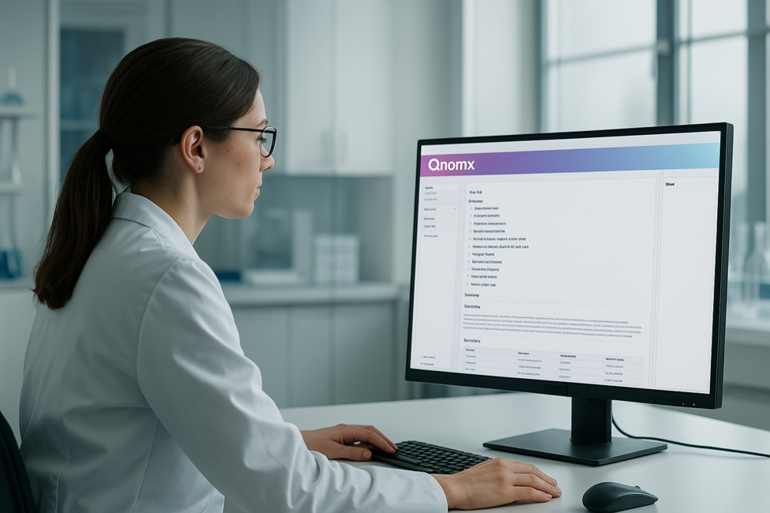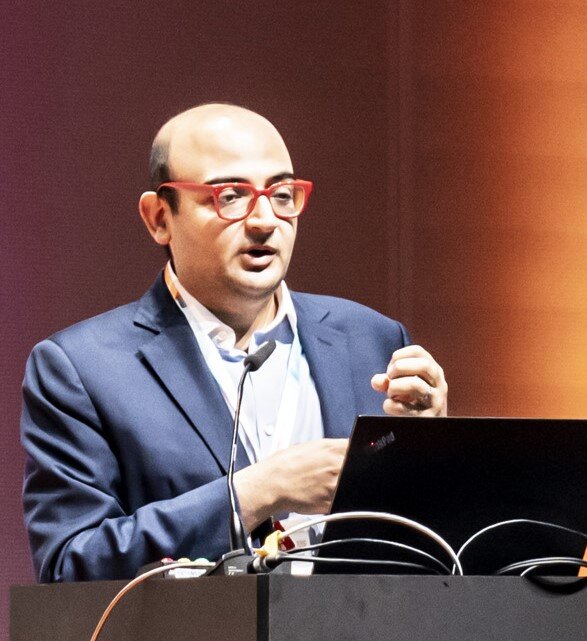A new ESMO systematic review maps AI’s growing role in pathology and oncology, as well as challenges in its implementation due to infrastructure, regulatory framework and human factors
Given the rapid progress in artificial intelligence (AI)-based systems for the automated detection and characterisation of cancer, as well as in the assessment of prognostic biomarkers in recent years, it has become increasingly difficult for oncology researchers and professionals to stay up to date. A new ESMO paper, published in the Annals of Oncology (Article in press, April 29, 2025), offers a comprehensive overview of how the AI landscape in oncology and pathology has evolved so far, highlighting current applications and limitations to the use of this technology in cancer care.
Through a systematic review-based approach, representatives from the ESMO Precision Oncology Working Group (POWG), together with other international experts, identified a total of 211 studies, published between 2013 and 2022, that applied AI for tumour diagnosis, molecular biomarker detection, and cancer prognosis assessment. As the study author Dr Antonio Marra from the European Institute of Oncology IRCCS, Milan, Italy, highlights, the paper also sheds light on the fact that building a functioning ecosystem around AI — one that also takes into account cultural, regulatory, and ethical aspects, in addition to technological ones — is essential.
In the systematic review, you provide evidence of how AI is transforming oncology, but also identified some limitations to the full adoption of this technology in clinical practice. What are they?
AI has the potential to profoundly change cancer care. However, there are still several technical barriers for its wide adoption in clinical workflows, including data availability and quality, biases in model development and explainability – i.e., our human ability to understand and interpret outputs from AI models.
Another major obstacle is the lack of adequate infrastructure. Not all the clinical oncology units are well-equipped for adopting AI, and today digital pathology is implemented only in some countries, and mainly in large cancer institutes which meet some infrastructural and structural requirements. In addition, despite the costs for the deployment of AI-based solutions are modest -- making them an opportunity for the delivery of biomarkers to healthcare systems with less abundant resources, the financial investment required for the implementation of digital pathology can be prohibitive in the early stages.
Providing education and guidance to clinicians and pathologists about how AI-based methods should be incorporated in daily routine is also crucial. In our collaborative work, we identified several conceptual and cultural challenges to AI adoption, such as resistance to paradigm-shifting approaches and to the use of technology, which is often perceived as fallible or as a ‘black box’ of unknowns. Increasing educational opportunities at multiple levels may help build trust within the oncology community regarding the integration of AI into clinical practice. I also believe it is important to begin educating medical students from the early years of their undergraduate studies on how AI can be applied in clinical practice and research, mirroring the approach taken during the genomic revolution. Indeed, over the last two decades, nearly all academic programmes in medicine and oncology have begun including courses on the foundations of genomics, next-generation sequencing, and personalised medicine.
How is the regulatory environment supporting the adoption of AI solutions in oncology?
The regulatory environment is evolving in parallel to technological advances, and discussions are ongoing among oncology professionals, different stakeholders and regulators on how to define the best regulatory pathway to bring innovation to be ready-to-use in the clinical setting.
However, uncertainties remain. While some of the AI systems and tools developed so far have received clearance by the U.S. Food and Drug Administration (FDA), there is no clear guidance on how they should be implemented in clinical settings. Also, it remains unclear whether FDA approval would be required for every AI-based solution or if Clinical Laboratory Improvement Amendments (CLIA) certification would be sufficient. In Europe, the European Medicines Agency (EMA) released a reflection paper in 2024 on the use of AI in the lifecycle of medicines which may help developers prepare marketing authorisation applications for human medicine.
Given that most AI-driven solutions in digital pathology and oncology will share a similar development process and minimal requirements for regulatory approval with other tools or biomarkers which are currently used in clinical settings, I believe that we should start rethinking the way novel tools are developed and the type of validation that is required for their implementation in clinical practice.
Could discrepancies in regulatory approval processes and decisions across different geographical regions lead to a sort of ‘AI divide’ in oncology?
I do not think so. While it is true that the FDA has cleared more AI-based devices for medicine than the EMA so far, what truly makes the difference in terms of their real-world impact on cancer care is the extent to which these solutions are actually implemented in clinical practice. For instance, a CE-IVD, which indicates that a medical device complies with EU regulations and is approved for clinical diagnostic use, was given to an AI-based tool for assessing microsatellite instability (MSI) from whole slides images of colorectal cancer (Nat Med. 2019 Jul;25(7):1054-1056). Although MSI is a predictive biomarker for response to immunotherapy, and the tool has proven high sensitivity, a few institutions are currently using it as a pre-screening strategy to reduce MSI testing burden for pathologists. Similarly, other tools that have received clearance in the US have not been integrated in routine clinical workflow. Still, the AI uptake in oncology appears to be a driving factor for its transformative value in practice.
In the systematic review, we provide some examples of how AI can be implemented in clinical settings. Currently the ESMO Real World Data and the ESMO Precision Oncology groups are jointly working to add another piece to the puzzle of the requirements for AI applied to cancer, developing what will be a methodological framework for clinical validation requirements of AI biomarkers in oncology.
AI as a field continues to evolve at an unprecedented speed. How can medical oncologists keep up with the pace of technological progress?
Navigating the rapid growth of scientific publications on AI and of novel tools is complex, and only a multidisciplinary approach can help distinguish truly transformative research — those studies that represent real breakthroughs — from incremental research, which merely adds to existing knowledge. When we started working on the systematic review in 2021, there were very few studies on AI applications: over a two-year period the number of available papers increased exponentially, and we had to figure out how to manage a larger volume of information for our research. So, in 2024, we conducted a scoped literature revision to highlight updated examples showcasing the field's evolution over the previous two years.
Establishing multidisciplinary groups of experts with different backgrounds and skills beyond medical oncology, including epidemiologists, biostatisticians, engineers and experts in artificial intelligence is today a priority, and ESMO is taking significant action in this direction. For instance, at the first ESMO AI & Digital Oncology Congress later this year, experts from various fields will have the chance to connect, learn and discuss about the digital transformation in cancer care. In particular, I am looking forward to the sessions on the implementation of digital technologies in the real world, to learn how digital health is tangibly transforming our clinical practice; and the one diving into ethical aspects of and patient perspectives on AI, which I hope will shed light on how the new technologies will help to make oncology better for our patients.
AI & Digital Oncology: Resources in one place
Looking for further insights into how artificial intelligence and digital tools are impacting oncology? The ESMO AI & Digital Oncology Hub brings together expert perspectives, research updates, and thought leadership from across oncology.
It is a space where you can stay informed, discover resources, and follow the conversation on digital innovation in cancer research and treatment.
To further explore the transformative potential of AI in oncology, the very first ESMO AI and Digital Oncology Congress 2025, taking place from 12 to 14 November, will provide a dedicated platform focused on the latest advances in AI and digital technologies in cancer care.







